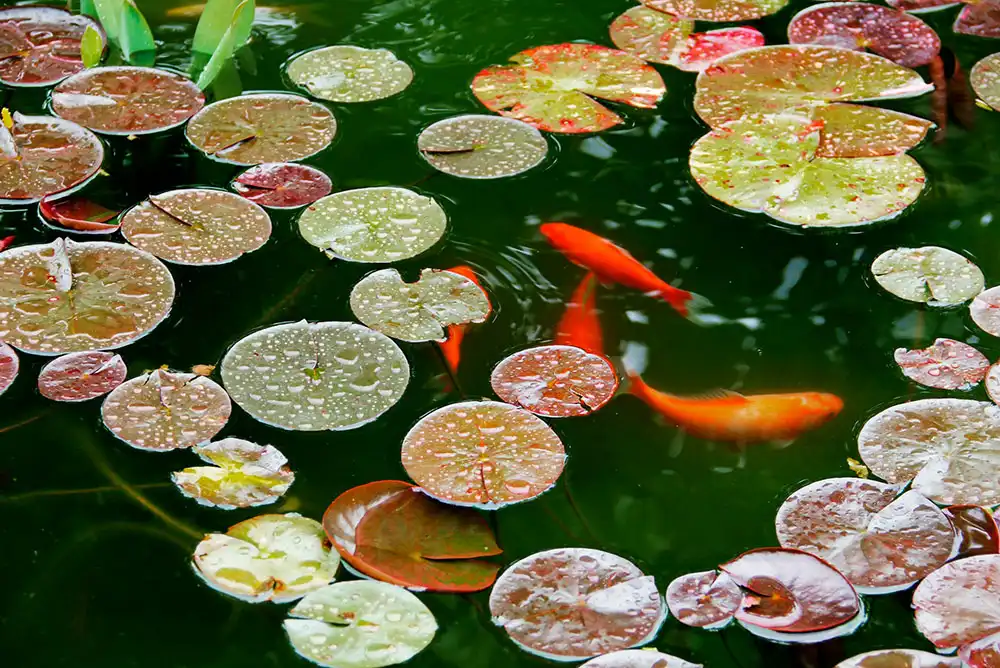
01 Apr How to Trim Aquatic Plants
At Aquatic Gardens, I take a hands-on approach to maintaining koi ponds that are both visually appealing and ecologically balanced. Here is a practical guide to trimming aquatic plants, ensuring your pond remains healthy and inviting.
Identifying Aquatic Plants Suitable for Koi Ponds
The first step is to recognize which plants belong in a koi pond. Typically, I look for species that complement water quality and provide natural shade, such as water lilies, lotuses, and marginal plants like pickerel rush. These selections enhance beauty and support a balanced ecosystem for your koi.
Essential Tools and Safety Equipment
For a safe and efficient trimming process, I recommend assembling the following tools:
- Cutting Tools: Use sharp, rust-resistant shears or aquatic plant trimmers.
- Gloves: A sturdy pair of waterproof gloves protects your hands.
- Safety Goggles: When trimming near water, goggles help keep debris out of your eyes.
- Floating Devices: A small raft or floating platform stabilizes your work area for larger ponds.
Seasonal Timing and Frequency of Trimming
Timing is crucial. I typically trim aquatic plants during early spring and late summer. In spring, this prevents overgrowth after winter dormancy, while late summer trimming helps maintain clarity as growth slows. A quarterly trim is usually sufficient in warmer climates like Beverly Hills, though more frequent attention may be necessary if your pond experiences rapid growth.
Techniques for Trimming Different Plant Types
Different aquatic plants require varied approaches:
- Submerged Plants: Trim these gently to avoid disrupting the root system. Focus on removing dead or decaying sections while keeping enough foliage to support oxygenation.
- Emergent Plants: Cut back the tops to control height, ensuring you do not remove more than one-third of the plant at a time. This preserves the plant’s health and its ability to re-sprout.
- Floating Plants: Remove excess growth carefully with a fine net, which helps maintain a balanced light penetration and reduces algae growth.
Maintaining Pond Health and Water Quality
Regular trimming is key to managing nutrients in the pond. Excess plant matter can lead to decaying organic material that compromises water quality. By removing overgrowth and dead leaves, I help maintain clear water and prevent the buildup of harmful substances. This proactive approach supports a healthier environment for your koi.
Impact on Koi and Overall Pond Ecosystem
While trimming, it is essential to consider the koi. I avoid aggressive pruning that might disturb their habitat. Instead, I work slowly and methodically, ensuring that trimming does not affect the pond’s natural shelter or food sources. A balanced plant population supports both water quality and the overall well-being of your fish.
Post-Trim Maintenance and Cleanup
After trimming, the next step is cleanup:
- Remove Debris: Collect fallen leaves and cuttings from around the pond to prevent water contamination.
- Inspect Water Quality: A brief test after cleanup ensures that any potential nutrient spikes are addressed.
- Monitor Plant Regrowth: I monitor regrowth to plan for subsequent maintenance sessions. This ensures that your pond remains in optimal condition throughout the year.
Professional Pond Maintenance Options
Aquatic Gardens offers comprehensive pond maintenance services for those who prefer expert intervention. We handle everything from routine trimming to water quality management, ensuring that every aspect of your koi pond remains pristine and balanced. Our team is equipped to address any size or complexity of the pond, providing you with reliable and professional service.
Following these practical steps can maintain a beautiful and healthy koi pond. At Aquatic Gardens, your pond’s well-being is our priority, and we are dedicated to delivering professional, affordable, and reliable service for both residential and commercial properties throughout the greater Los Angeles area.



